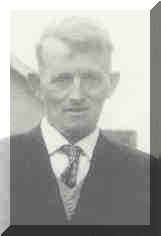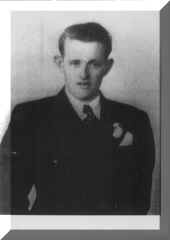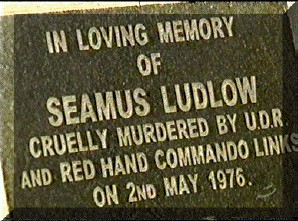The Murder of Seamus Ludlow in County Louth, May 1976. Towards a public inquiry?



The Murder of Seamus Ludlow in County Louth, May 1976. Towards a public inquiry?
|
|
Introduction to the murder of Seamus Ludlow and the official cover-up. Michael Cunningham investigation - 1978 The recent Campaign for Truth and Justice. Irish Victims Commission Report. Ludlow family's questions for the RUC (now the PSNI). Jim J. Kane's letter to the N I Human Rights Commission. Jim J. Kane's letter to the RUC Ludlow Family Letter to Bertie Ahern Other Ludlow Family Sites. |
The Argus, special report 30 August 1985: On May 1st 1974, a forestry worker left his home to go for a drink: the following day his bullet riddled body was found. Nine years later we ask: WHO KILLED SEAMUS LUDLOW? On Saturday, May 1, 1974, Seamus Ludlow, a 47-year-old forestry worker, arrived home earlier than expected at the home of his sister, Mrs. Anne Sharkey, Culfore, Mountpleasant, Dundalk. It was just 1.30 and Mrs. Sharkey was surprised to see her brother for he normally went for a drink with a colleague, Tommy Fox, in the Border Inn after finishing work at lunchtime on a Saturday. Seamus explained that Tommy had been to a function the previous night and did not feel like a drink. Mrs. Sharkey cooked a meal, a fry, for her brother and around 3 o'clock he said he would go into Dundalk for a drink, promising to be home for the main family meal that evening. Seamus never returned home. His body was discovered the following afternoon lying on top of a ditch no more than half a mile from his home. He had been shot. Today, over nine years later both the motive and responsibility for Seamus Ludlow's murder remain just as big a mystery as ever. Another of a growing litany of unexplained deaths that have dotted the years since the outbreak of violence in the North in 1969. Various theories have been forwarded for Seamus Ludlow's death. It was a case of mistaken identity, he was assassinated by an SAS hit squad, or he was silenced by the Provisional IRA. All of these theories bear no credence because for a simple reason that there is not one shred of evidence to substantiate one or another. What is known is that Seamus, in many respects a largely inoffensive man who was fond of a drink, did make his way to Dundalk that Saturday afternoon when he left his sister's home. He was seen in a number of pubs in the Bridge Street/Lisdoo area and there were reports, again which could not be substantiated, that he was seen on the Newry road hitching a lift home after closing time. The next anyone saw of Seamus Ludlow was the discovery of his body at 3.30 on the Sunday afternoon about 20 yards down a laneway on the back road linking the Newry and Carlingford roads, only a short distance from the cottage at the Thistle Cross junction where Seamus lived with his mother, sister and her 10 children. He had been shot three times, the fatal wound being caused by a bullet which passed through his heart, lodging in the muscle of the back. His brothers Kevin and Paddy, who had stumbled onto the commotion caused by a Garda road check near the scene and knowing that Seamus was missing from the previous night, identified the body where it was found. Intensive Garda enquiries followed the murder, including exhaustive questioning of the family, friends and witnesses who saw the deceased on the Saturday afternoon. But no suspects were ever identified and Gardai who have left the file on Seamus Ludlow's death "open" say the death is still a complete mystery to them. The most creditable theory one of mistaken identity. The most creditable theory for Seamus Ludlow's death was that he was mistaken for someone else and shot either by the British or the Provisional I.R.A. Certainly Mr Ludlow's lifestyle or his activities prior to his death provide no motive for his killing. He was, by all accounts, a man of simple tastes who liked nothing more than a drink with friends. He had worked all his life as a forestry worker in the immediate vicinity of his home, employed at the time of his death by Danny Phillips. When his sister Anne and her husband, John, moved into the family home at Culfore, Seamus continued to reside there, being kind and considerate to his elderly mother and his sister's family. His mother, then 79, died two years after Seamus, still thinking that he had been killed in a car crash, for the family thought it best to keep from her the true circumstances of his death. Seamus was one of a family of six himself and did not interest himself much in his earlier days in girls, preferring instead the company of his friends in the public house where he liked nothing better than a game of rings or marbles, a past-time at which he gained more proficiency and recognition, winning a marbles contest at Dundalk Festival one year. But he showed his caring nature and love for children by acting the part of Santa Claus for his brother, Paddy, who was closely involved in the Marian Park Association at the time. Such a background made the talk of establishing a motive for his murder all the more difficult, for while like many others Seamus' sympathies would favour republicanism, he was not as far as Gardai and his family knew involved in any way in political activity. Why then was he murdered? There were reports that a S.A.S. hit squad were responsible, mainly because of the high profile of that British Army unit along the border at the time; the suspicion that a number of men subsequently charged in the north were snatched from Dundalk pubs by the SAS and the fact that a SAS unit was later apprehended in the Republic at Omeath. There were reports too from a petrol pump attendant along the Newry Road of two men with English accents buying petrol on the night of Mr Ludlow's death, but no link was ever established between the two events. The expert manner of the shooting, with a small calibre weapon, also lent weight to the theory that it was a professional assassination, but again this is just speculation. |The only theory that Gardai will offer is that Mr Ludlow died because his killers thought he was someone else, but this is as far as they are prepared to speculate. Shot Three Times At Close Range. The inquest into Seamus Ludlow's death conducted some months later at Dundalk Courthouse by the coroner, Dr. T. E. Scully, returned a verdict that death was due to gunshot wounds. The inquest also concluded, on the medical evidence from the State Pathologist, Dr. J.F.A. Harbison, that the deceased could not have killed himself and that in all probability the shooting did not take place where the body was found. Dr. Harbinson found that the shooting had taken place in the previous 24 hours and that the deceased had been shot three times at close range, powder marks on the clothing supplying the vital evidence of this conclusion. One bullet passed through Mr. Ludlow's right lung and out again through his arm. And there was a burn mark on the deceased's right hand, indicating that he had raised his hand to fend off the bullet which went through his heart lodging in the back muscles. This was the bullet which killed him. The post mortem revealed that the shots had been fired in life, meaning that Mr. Ludlow was not already dead when shot, and the absence of mud on his shoes from the muddy lane where the deceased was found led to the conclusion by Dr. Harbison that the body had been dumped there. The nature of the wounds and the angles by which the bullets entered the body meant, in Dr. Harbinson's opinion, that the deceased could not have shot himself. No compensation was paid to family No compensation was ever paid to the Ludlow family for the death of their brother, nor was any sought. Indeed the family have heard nothing officially about Seamus' death from the authorities since the initial enquiries after the murder. The family had to bear the cost of the burial. Yet we have learned that compensation could have been claimed under the Scheme for Compensation for Criminal Injury. That scheme, under which large amounts of taxpayers money have been paid out to both victims and relatives of terrorism and criminal acts, did not come into operation until 1974. But the act covers acts of violence committed "on or after October 1, 1972". Whether the Tribunal which adjudicates on such claims would entertain such a claim is another matter.
I Homepage I I Top I I Press Coverage I |